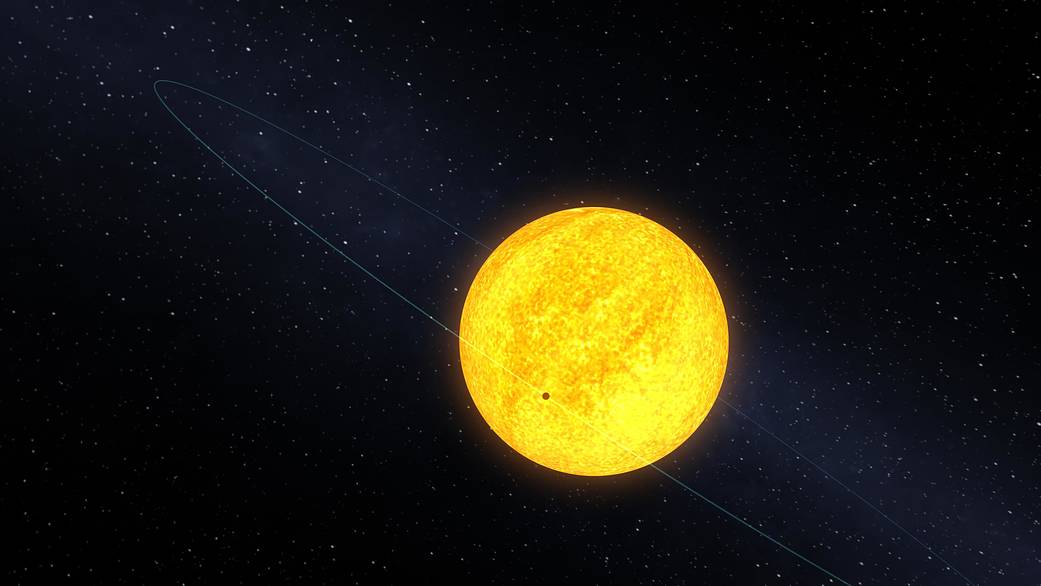
Kepler-10b orbits one of the 150,000 stars that the spacecraft is monitoring between the constellations of Cygnus and Lyra. We aim our mosaic of 42 detectors there, under the swan’s wing, just above the plane of the Milky Way galaxy. The star itself is very similar to our own sun in temperature, mass and size, but older with an age of over 8 billion years, compared to the 4-and-1/2 billion years of our own sun. It’s a quiet star, slowly spinning with a weak magnetic field and few of the sun spots that characterize our own sun. The star’s about 560 light years from our solar system and one of the brighter stars that Kepler is monitoring. It was the first we identified as potentially harboring a very small transiting planet. The transits of the planet were first seen in July of 2009.
The diameter of Kepler-10b is only about 1.4 times the diameter of Earth and it’s mass is about 4.5 times that of Earth. It is the best example of a rocky planet to date.
Credit: NASA/Kepler Mission/Dana Berry




























